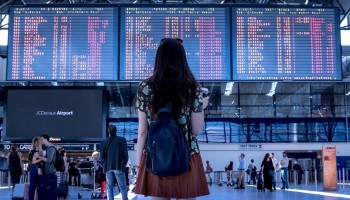Tourist Sector in Małopolska.

Małopolska is one of the most attractive tourist regions in Poland and also the most frequently visited - both by domestic and foreign tourists. This is confirmed by tourist traffic surveys conducted periodically by the region self-government, which invariably, from year to year, show an upward trend. What attracts tourists to Małopolska is undoubtedly the unique cultural and natural heritage of the region, but also a rich, diverse tourist offer, a multitude of cultural events, still living tradition, as well as delicious cuisine. The extraordinary tourist attractiveness of the region is inseparably connected with its geographical location. Małopolska is one of the few regions in Poland with varied natural conditions and terrain from the lowlands to the high mountains. The landscape and natural conditions make the Małopolska Region one of the most important tourist regions in Poland. The Małopolska Region has also been implementing many projects for several years aimed at constantly increasing the tourist off er of the region. Cultural events, series of thematic events, marking of new tourist routes, as well as support for historic buildings are just a few tasks carried out with a view to ensuring that Małopolska can be successfully considered the most attractive tourist region in Poland.
Who visits Małopolska?
From year to year, the percentage of foreign tourists among visitors to the Małopolska Region is increasing. Data from 2017 show that every 5th foreign tourist arriving in Poland benefited from accommodation in facilities located in the Małopolska Region, which puts Małopolska the honourable first place in the country in terms of the number of overnight stays for tourists from abroad. The majority of foreign guests are represented by: Germany (18.9 %, France (11.2 %), Great Britain and Ukraine (8.2 %). A large group of visitors are also Italians, Americans, Spaniards, Czechs and people from the Scandinavian countries. Good communication access, a modern and wide congress and conference base supplemented by a rich offer of high standard accommodation means that people traveling for business purposes also willingly come to Małopolska. Małopolska closed 2018 with a record tourist result. The region was visited by as many as 16.7 million people, i.e. exactly 800,000 more than a year ago. In total, domestic and foreign tourists have left over PLN 14 billion in the region.
Business tourism in the Małopolska Region:
Małopolska is undoubtedly one of the most dynamically developing regions on the economic map of Poland and Europe. The strong position of our region is demonstrated by companies operating dynamically in Małopolska Region, recognized not only in the country but also abroad. It is not without reason that Małopolska is one of the leading destinations chosen for the organization of business and economic meetings, which only confirms the thesis that it is a perfect place for business development. According to the latest data, the capital of Małopolska – Krakow – ranks high sixth in the global ranking for the best location for business service centres. Business tourism is a type of tourism for people who travel and stay in a given place for business purposes. It is assumed that business tourism is practiced mainly by people with high social status (management of enterprises), as well as representatives of the world of science, with high education. A business tourist travels mainly outside the tourist season, traveling individually or in small groups, but not with their family. A business tourist is considered to be a particularly demanding tourist who chooses to stay in luxury accommodation. Among the reasons for traveling for business purposes, the most common are satisfaction of creative, emotional and aesthetic needs, as well as the desire to learn or the need to make new acquaintances (integration). The requirements set by business tourists oblige hotel owners to provide the highest level of service and the highest standard. Services sought by business travellers impose the need to use high standard accommodation facilities, i.e. 5- and 4-star hotels – they constitute the basic accommodation base for tourists traveling for business purposes. In 2018, 15 5-star hotels and 79 4-star hotels were operating in the Małopolska Region. A good alternative for business tourists are 3-star hotels providing a standard of services at the appropriate level and good accessibility due to the number of places offered. In 2018, 219 such facilities were operating in the Małopolska region and they constituted 52.2% of all hotels.
Krakow – the heart of Małopolska Region and Krakow Metropolitan Area:
Krakow is a city with an extremely rich thousand-year history, with many valuable architectural objects, it is a former seat of the Polish kings and a former capital of the country. Today, Krakow is one of the most important European metropolises. Krakow is located in southern Poland, in the central-western part of the Małopolska Region on the Vistula. Krakow is located at the confluence of several geographical regions: the Krakow Gate, the Oświęcim Valley, the Sando[1]mierz Basin, the West Beskids Foothills, and the Kraków-Częstochowa Upland. The convenient location of Krakow makes it an excellent starting point for trips to the mountains or valleys located in the Jura Krakowsko-Częstochowska. Krakow also serves as an administrative, cultural, educational, scientific, economic, service and tourist centre. In addition, the capital of Małopolska ranks second (just after Warsaw) in terms of modern office space (over 1 million square meters of office space), and is also one of the key railway junctions in Poland. In Balice near Krakow there is the second airport in Poland in terms of the number of passengers served annually.
You want to know more?
Read: „Toruism Sector in Małopolska” in our publications section!


 rozmiar tekstu
rozmiar tekstu kontrast
kontrast Polityka prywatności
Polityka prywatności Zasady dostępności
Zasady dostępności


